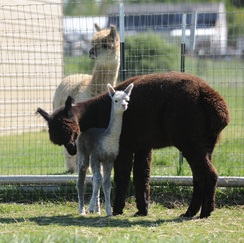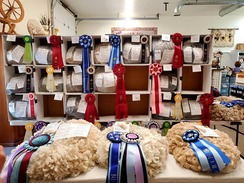Alpaca Ranching in the Pacific Northwest

Dr. Robert VanSaun All About Nutrition April 6th @ 12:00pm PST

Gotta love cria season!

NW Alpaca Showcase Fleece Show 2021
Welcome to the Pacific Northwest Alpaca Association, an affiliate of our national organization, Alpaca Owners Association.
The Pacific Northwest is ideally suited for raising alpacas. Our temperate climate, nutrient-rich grazing pastures, and an abundance of knowledgeable, supportive owners makes raising alpacas fun and profitable.
Why alpacas?
Alpacas were a cherished treasure of the ancient Incan civilization and played a central role in the Incan culture located on the high Andean Plateau and mountains of South America. Alpacas were first imported to the United States in 1984. All were registered and DNA tested, and progeny are DNA tested to ensure integrity of the breed. Alpacas are now being successfully raised and enjoyed throughout North America and in many other countries.
There are two types of alpaca -- Huacaya and Suri -- the difference being the style of fleece. Alpacas will breed into their teens, and live into their teens and twenties. Gestation averages 11.5 months. Alpacas eat grasses and chew a cud. Adult alpacas are about 36" tall at the withers and generally weigh between 120-200 pounds. They are gentle and easy to handle. Clean-up is fairly easy since alpacas use communal dung piles. They require fencing to keep predators out, and, depending on the quality of forage, can be pastured at 4-8 per acre.
Alpacas produce one of the world's finest and most luxurious natural fibers. It is shorn from the animal annually without injury. Soft as cashmere and warmer, lighter, and stronger than wool, alpaca comes in more colors than any other animal fiber, approximately 22 basic colors with many variations and blends. This luxurious fleece, once reserved for Incan royalty, is now enjoyed by fiber artists and consumers around the world. Many families and retirees are adding alpacas to their lives for fun, profit, and the pleasurable rewards the alpaca lifestyle affords.
Already have alpacas?
If you're currently an alpaca owner in Washington, Oregon, Idaho, or Montana, join PNAA today! Take advantage of the membership benefits PNAA offers and become a part of our dedicated community of Pacific Northwest alpaca owners.
|